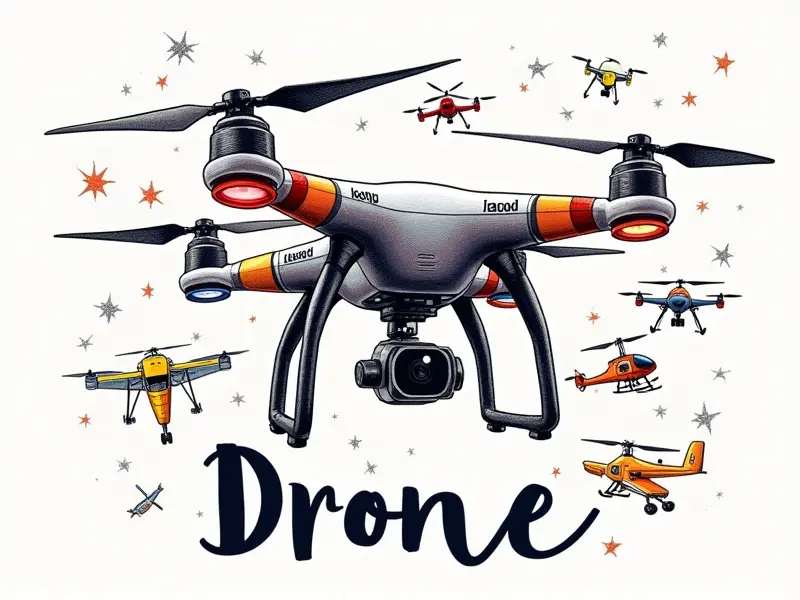RC drone racing rules

Ultimate RC Drone Racing Rules Guide
Welcome to the world of RC drone racing, where speed and precision meet in a thrilling competition. This guide is designed for both newcomers and seasoned pilots who want to understand and adhere to the rules that govern this exhilarating sport.
Essential RC Racing Safety Guidelines Explained
- Helmets: Always wear a helmet designed for FPV racing, which provides protection against head injuries and accommodates VTX goggles.
- Flight Gear: Use gloves to maintain grip on the transmitter and ensure your flight suit is snug but not restrictive.
- Race Area Safety: Inspect the race area for hazards such as power lines, trees, and other obstacles before taking off.
Understanding RC Drone Competition Rules
The rules of an RC drone racing competition can vary depending on the event and location. However, there are some fundamental guidelines that apply universally:
- Drone Specifications: Ensure your drone meets weight and size requirements set by the organizing body.
- Flight Gear: Use a transmitter with at least 2 joysticks for pitch, roll, yaw, and throttle control.
RC Drone Racing: Know Before You Fly
Prior to taking part in an RC drone race, it's crucial to familiarize yourself with the following:
- Licensing Requirements: Check if a license or certification is required for participation.
- Race Format: Understand whether the event follows a standard format like laps around an oval track or a more complex course layout.
Beginner's Guide to RC Drone Race Laws
If you're new to the sport, here are some key points to consider:
- Local Regulations: Research and comply with local laws regarding drone usage in your area.
- Safety Protocols: Follow safety guidelines provided by the organizing body to ensure a secure environment for all participants.
Pro Tips for RC Drone Race Regulations
Here are some expert tips to help you navigate the rules effectively:
- Stay Informed: Keep up-to-date with changes in regulations and guidelines from governing bodies.
- Practice Makes Perfect: Regularly practice flying your drone under simulated race conditions to improve your skills and compliance.
Winning Strategies in RC Drone Races
To increase your chances of success, consider these strategies:
- Speed Control: Master the art of controlling speed through tight turns without losing altitude or crashing into obstacles.
- Course Familiarity: Study the race course layout and identify optimal flight paths to gain an advantage over competitors.
Cheat Sheet for RC Drone Race Rules
A quick reference guide to help you remember key rules and regulations:
- Weight Limitations: Ensure your drone does not exceed the maximum weight limit set by the event organizers.
- Battery Standards: Use batteries that meet the power requirements specified for the race.
Essential Safety Rules for RC Drone Racing
Safety should always be a top priority. Here are some critical safety rules to follow:
- Hazard Identification: Scan the area for potential hazards before each flight and during setup.
- Emergency Procedures: Have an emergency plan in place, including how to safely land your drone if it malfunctions mid-flight.
Navigating Legalities in Competitive Drone Racing
To avoid legal issues, make sure you understand the following:
- Permits and Licenses: Obtain any necessary permits or licenses required by local authorities to operate drones for racing purposes.
- Zoning Laws: Be aware of zoning laws that may restrict drone usage in certain areas, especially near airports or government facilities.
The Complete List of FPV Drone Racing Regulations
This comprehensive list covers all aspects of competitive FPV racing:
- Airspace Restrictions: Adhere to airspace restrictions imposed by aviation authorities, particularly in urban areas and near sensitive locations.
- Technical Specifications: Comply with technical specifications regarding drone weight, size, and flight control systems.
Conclusion
Mastery of RC drone racing rules is essential for both safety and competitive success. Whether you're a beginner or an experienced pilot, adhering to these guidelines will enhance your enjoyment of the sport while ensuring everyone's safety. Stay informed about updates in regulations, practice diligently, and always prioritize safe flying practices.

